Food Additives And Contaminants The addition of chemicals

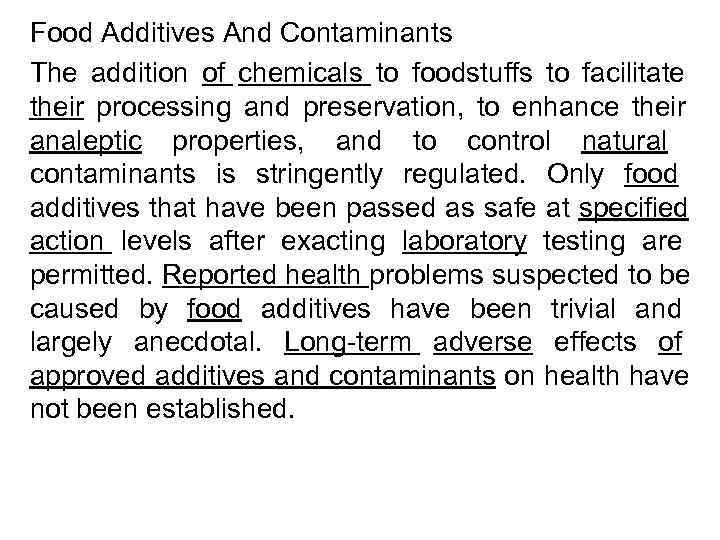

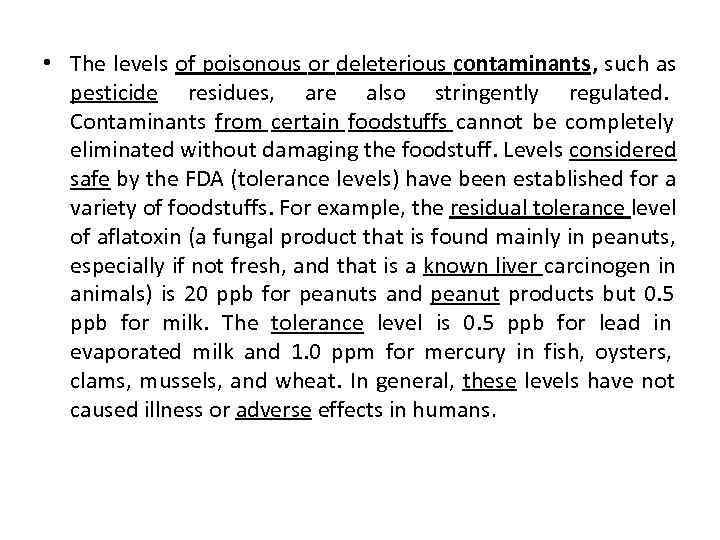
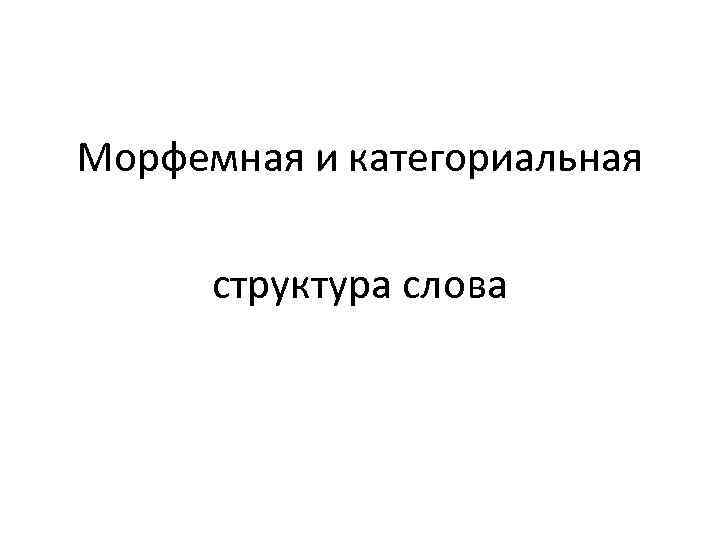
![• Train – ed [d] • Publish – ed [t] • • Train – ed [d] • Publish – ed [t] •](https://present5.com/presentation/3/5379792_397656961.pdf-img/5379792_397656961.pdf-5.jpg)
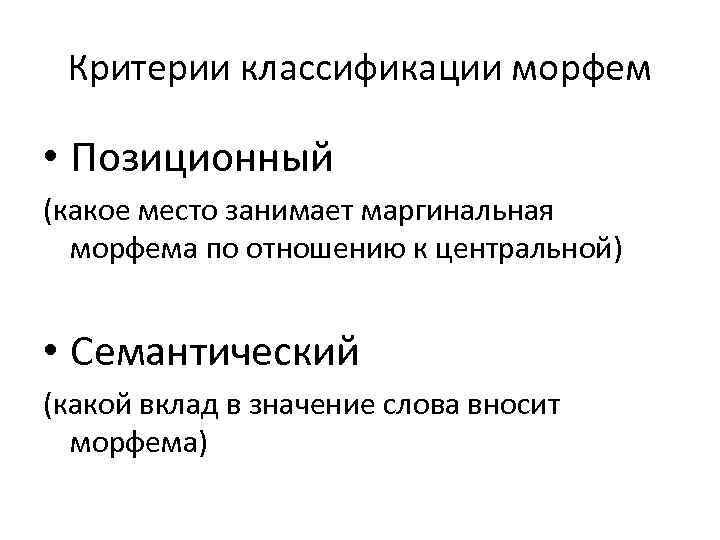

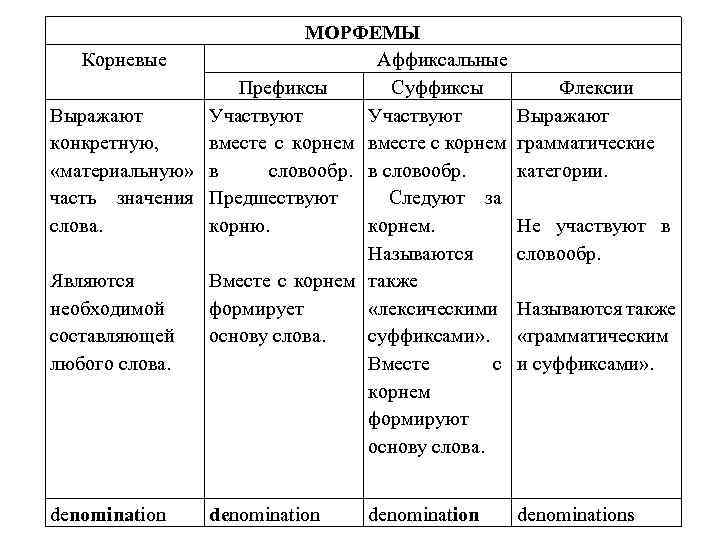



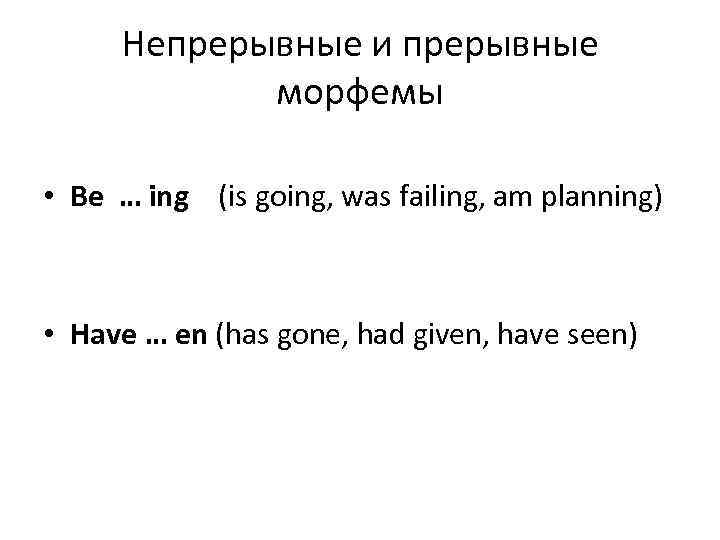


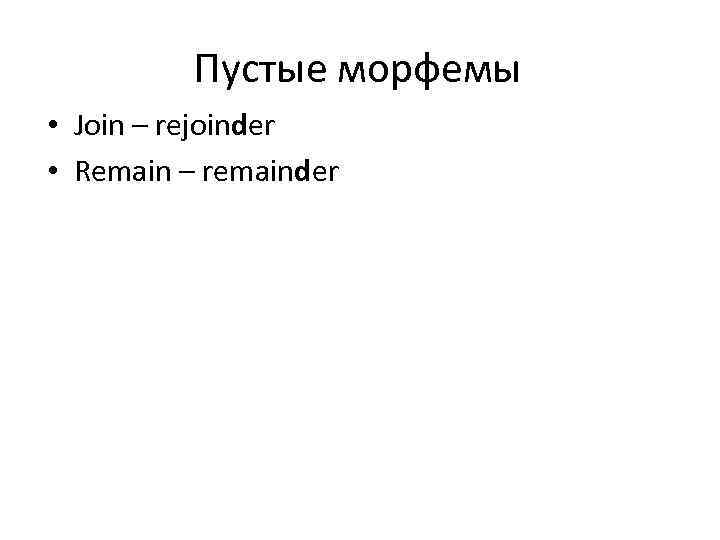

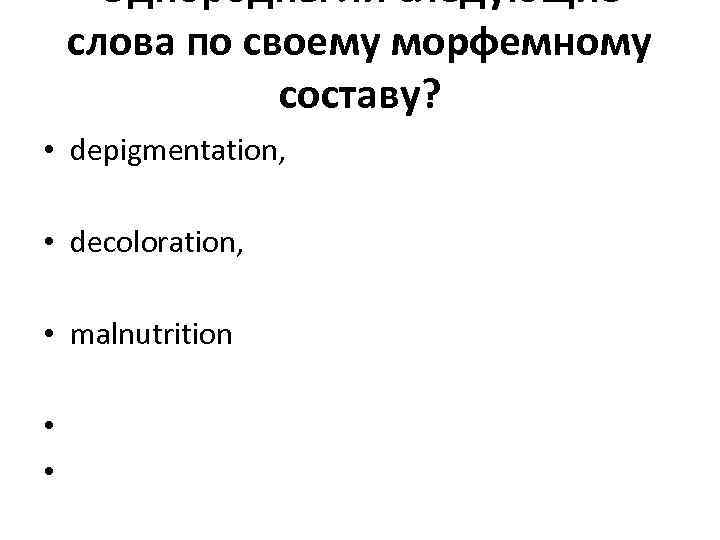
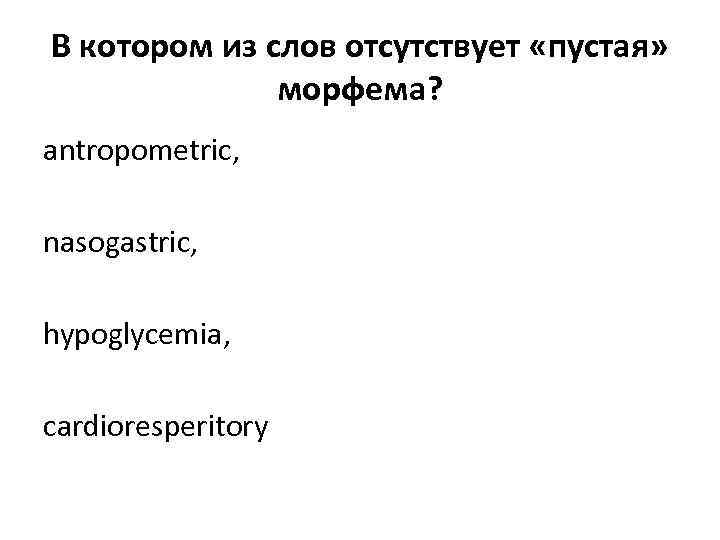


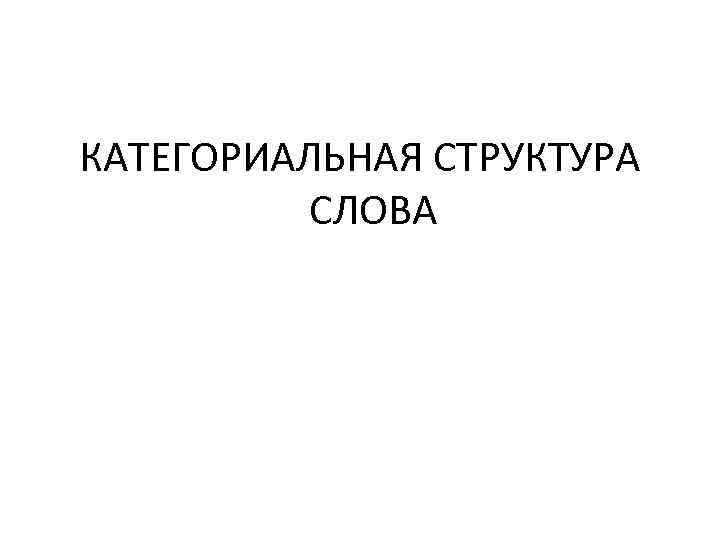
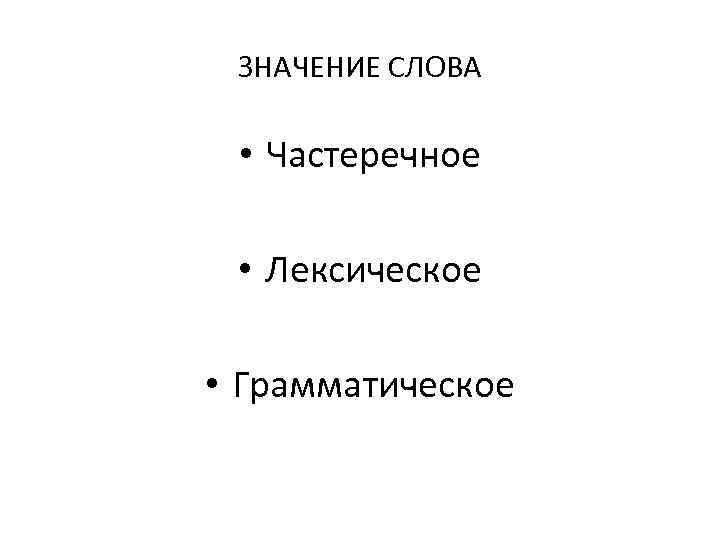

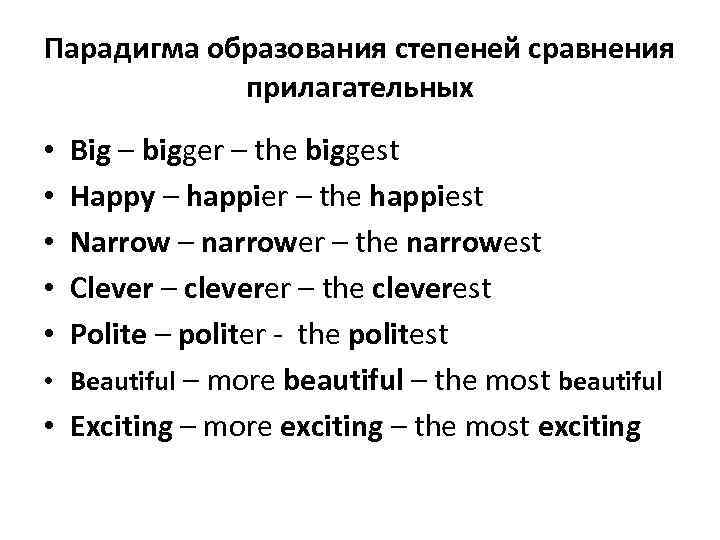
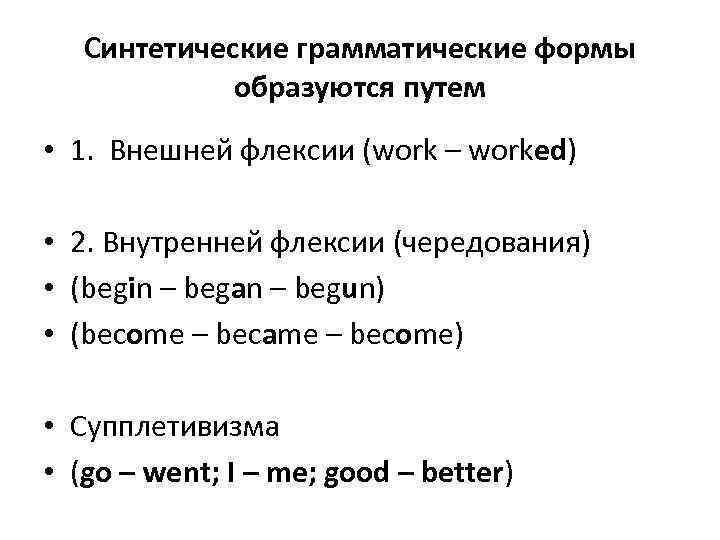
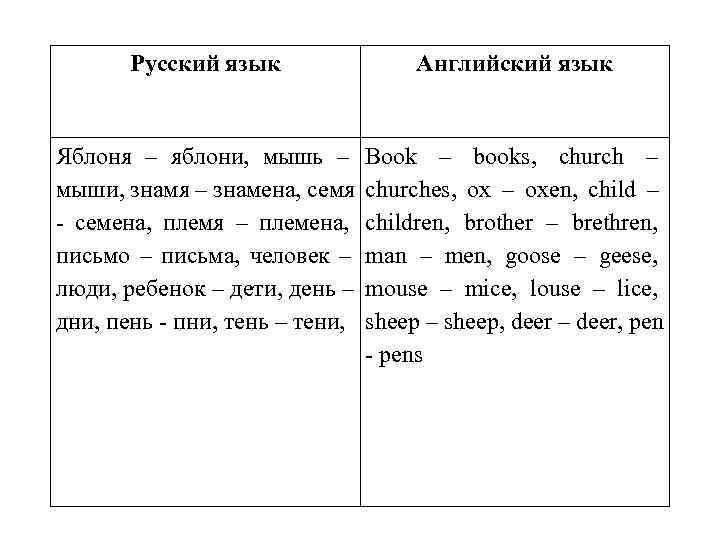
Морфемная и категориальная структура слова.ppt
- Количество слайдов: 26
 Food Additives And Contaminants The addition of chemicals to foodstuffs to facilitate their processing and preservation, to enhance their analeptic properties, and to control natural contaminants is stringently regulated. Only food additives that have been passed as safe at specified action levels after exacting laboratory testing are permitted. Reported health problems suspected to be caused by food additives have been trivial and largely anecdotal. Long-term adverse effects of approved additives and contaminants on health have not been established.
Food Additives And Contaminants The addition of chemicals to foodstuffs to facilitate their processing and preservation, to enhance their analeptic properties, and to control natural contaminants is stringently regulated. Only food additives that have been passed as safe at specified action levels after exacting laboratory testing are permitted. Reported health problems suspected to be caused by food additives have been trivial and largely anecdotal. Long-term adverse effects of approved additives and contaminants on health have not been established.
 The benefits of additives, including reducing waste and providing the public with a greater variety of attractive foods than would otherwise be possible, must be weighed against known risks. The issues involved are frequently complex. The use of nitrite in cured meats is an example. Nitrite inhibits the growth of Clostridium botulinum and imparts a desired flavor. However, there is evidence that nitrite is converted in the body to nitrosamines, which are known carcinogens in animals. On the other hand, the amount of nitrite added to cured meat is small compared with the amount from naturally occurring food nitrates converted to nitrite by the salivary glands. In addition, dietary vitamin C can reduce nitrite formation in the GI tract. The report of food hypersensitivity (allergy) in a few susceptible persons associated with some additives, especially coloring agents, is a concern. However, most of these reactions are caused by ordinary food (see Food Allergy and Intolerance in Ch. 148).
The benefits of additives, including reducing waste and providing the public with a greater variety of attractive foods than would otherwise be possible, must be weighed against known risks. The issues involved are frequently complex. The use of nitrite in cured meats is an example. Nitrite inhibits the growth of Clostridium botulinum and imparts a desired flavor. However, there is evidence that nitrite is converted in the body to nitrosamines, which are known carcinogens in animals. On the other hand, the amount of nitrite added to cured meat is small compared with the amount from naturally occurring food nitrates converted to nitrite by the salivary glands. In addition, dietary vitamin C can reduce nitrite formation in the GI tract. The report of food hypersensitivity (allergy) in a few susceptible persons associated with some additives, especially coloring agents, is a concern. However, most of these reactions are caused by ordinary food (see Food Allergy and Intolerance in Ch. 148).
 • The levels of poisonous or deleterious contaminants, such as pesticide residues, are also stringently regulated. Contaminants from certain foodstuffs cannot be completely eliminated without damaging the foodstuff. Levels considered safe by the FDA (tolerance levels) have been established for a variety of foodstuffs. For example, the residual tolerance level of aflatoxin (a fungal product that is found mainly in peanuts, especially if not fresh, and that is a known liver carcinogen in animals) is 20 ppb for peanuts and peanut products but 0. 5 ppb for milk. The tolerance level is 0. 5 ppb for lead in evaporated milk and 1. 0 ppm for mercury in fish, oysters, clams, mussels, and wheat. In general, these levels have not caused illness or adverse effects in humans.
• The levels of poisonous or deleterious contaminants, such as pesticide residues, are also stringently regulated. Contaminants from certain foodstuffs cannot be completely eliminated without damaging the foodstuff. Levels considered safe by the FDA (tolerance levels) have been established for a variety of foodstuffs. For example, the residual tolerance level of aflatoxin (a fungal product that is found mainly in peanuts, especially if not fresh, and that is a known liver carcinogen in animals) is 20 ppb for peanuts and peanut products but 0. 5 ppb for milk. The tolerance level is 0. 5 ppb for lead in evaporated milk and 1. 0 ppm for mercury in fish, oysters, clams, mussels, and wheat. In general, these levels have not caused illness or adverse effects in humans.
 Морфемная и категориальная структура слова
Морфемная и категориальная структура слова
![> • Train – ed [d] • Publish – ed [t] • > • Train – ed [d] • Publish – ed [t] •](https://present5.com/presentation/3/5379792_397656961.pdf-img/5379792_397656961.pdf-5.jpg) • Train – ed [d] • Publish – ed [t] • Meditat – ed [Id]
• Train – ed [d] • Publish – ed [t] • Meditat – ed [Id]
 Критерии классификации морфем • Позиционный (какое место занимает маргинальная морфема по отношению к центральной) • Семантический (какой вклад в значение слова вносит морфема)
Критерии классификации морфем • Позиционный (какое место занимает маргинальная морфема по отношению к центральной) • Семантический (какой вклад в значение слова вносит морфема)
 Классы морфем: • Корневые морфемы – семантический центр слова • Аффиксальные морфемы – специфицируют значение слова лексически и грамматически (префиксы, суффиксы, флексии)
Классы морфем: • Корневые морфемы – семантический центр слова • Аффиксальные морфемы – специфицируют значение слова лексически и грамматически (префиксы, суффиксы, флексии)
 МОРФЕМЫ Корневые Аффиксальные Префиксы Суффиксы Флексии Выражают Участвуют Выражают конкретную, вместе с корнем грамматические «материальную» в словообр. категории. часть значения Предшествуют Следуют за слова. корню. корнем. Не участвуют в Называются словообр. Являются Вместе с корнем также необходимой формирует «лексическими Называются также составляющей основу слова. суффиксами» . «грамматическим любого слова. Вместе с и суффиксами» . корнем формируют основу слова. denominations
МОРФЕМЫ Корневые Аффиксальные Префиксы Суффиксы Флексии Выражают Участвуют Выражают конкретную, вместе с корнем грамматические «материальную» в словообр. категории. часть значения Предшествуют Следуют за слова. корню. корнем. Не участвуют в Называются словообр. Являются Вместе с корнем также необходимой формирует «лексическими Называются также составляющей основу слова. суффиксами» . «грамматическим любого слова. Вместе с и суффиксами» . корнем формируют основу слова. denominations
 Свободные и связанные морфемы: • Force – enforcement • Use – unused • Procede – procedure • Guide – guidance • Teaspoon – teaspoonful • Treat – treatable • Лимон – пол-лимона
Свободные и связанные морфемы: • Force – enforcement • Use – unused • Procede – procedure • Guide – guidance • Teaspoon – teaspoonful • Treat – treatable • Лимон – пол-лимона
 Открытые и скрытые морфемы • Tumor Ø – tumor s • To cure Ø – cur ed • Barret Ø – Barret ’s • To provide Ø – it provide s
Открытые и скрытые морфемы • Tumor Ø – tumor s • To cure Ø – cur ed • Barret Ø – Barret ’s • To provide Ø – it provide s
 Аддитивные и заместительные морфемы • Look + ed small + er • Drive - drove – driven • Man – men • Long - length
Аддитивные и заместительные морфемы • Look + ed small + er • Drive - drove – driven • Man – men • Long - length
 Непрерывные и прерывные морфемы • Be … ing (is going, was failing, am planning) • Have … en (has gone, had given, have seen)
Непрерывные и прерывные морфемы • Be … ing (is going, was failing, am planning) • Have … en (has gone, had given, have seen)
 Уникальные морфемы • Booklet • Cloudlet • Ringlet • Hamlet -? ? ? ? ?
Уникальные морфемы • Booklet • Cloudlet • Ringlet • Hamlet -? ? ? ? ?
 Псевдоморфемы • Receive • Deceive • Perceive • Conceive • Devide • Provide
Псевдоморфемы • Receive • Deceive • Perceive • Conceive • Devide • Provide
 Пустые морфемы • Join – rejoinder • Remain – remainder
Пустые морфемы • Join – rejoinder • Remain – remainder
 Разберите слова по составу • decoloration, eventually, encodes, considerable, disruption, concentrated, intoxicated, overviewing, collaborate, interactions, bi-directional, inhabitants
Разберите слова по составу • decoloration, eventually, encodes, considerable, disruption, concentrated, intoxicated, overviewing, collaborate, interactions, bi-directional, inhabitants
 Однородны ли следующие слова по своему морфемному составу? • depigmentation, • decoloration, • malnutrition • •
Однородны ли следующие слова по своему морфемному составу? • depigmentation, • decoloration, • malnutrition • •
 В котором из слов отсутствует «пустая» морфема? antropometric, nasogastric, hypoglycemia, cardioresperitory
В котором из слов отсутствует «пустая» морфема? antropometric, nasogastric, hypoglycemia, cardioresperitory
 В котором из слов присутствует нулевая морфема? • synthesis, • gains, • cactus, • resource
В котором из слов присутствует нулевая морфема? • synthesis, • gains, • cactus, • resource
 В котором из слов можно выделить префикс? • irritability, • abnormalities, • requirement, • infectious
В котором из слов можно выделить префикс? • irritability, • abnormalities, • requirement, • infectious
 КАТЕГОРИАЛЬНАЯ СТРУКТУРА СЛОВА
КАТЕГОРИАЛЬНАЯ СТРУКТУРА СЛОВА
 ЗНАЧЕНИЕ СЛОВА • Частеречное • Лексическое • Грамматическое
ЗНАЧЕНИЕ СЛОВА • Частеречное • Лексическое • Грамматическое
 - (e) s • Faces Branches Pianos • Oxen Children • Fish Sheep Deer • Formulae Data Bases Phenomena • Mice Women Feet Teeth
- (e) s • Faces Branches Pianos • Oxen Children • Fish Sheep Deer • Formulae Data Bases Phenomena • Mice Women Feet Teeth
 Парадигма образования степеней сравнения прилагательных • Big – bigger – the biggest • Happy – happier – the happiest • Narrow – narrower – the narrowest • Clever – cleverer – the cleverest • Polite – politer - the politest • Beautiful – more beautiful – the most beautiful • Exciting – more exciting – the most exciting
Парадигма образования степеней сравнения прилагательных • Big – bigger – the biggest • Happy – happier – the happiest • Narrow – narrower – the narrowest • Clever – cleverer – the cleverest • Polite – politer - the politest • Beautiful – more beautiful – the most beautiful • Exciting – more exciting – the most exciting
 Синтетические грамматические формы образуются путем • 1. Внешней флексии (work – worked) • 2. Внутренней флексии (чередования) • (begin – began – begun) • (become – became – become) • Супплетивизма • (go – went; I – me; good – better)
Синтетические грамматические формы образуются путем • 1. Внешней флексии (work – worked) • 2. Внутренней флексии (чередования) • (begin – began – begun) • (become – became – become) • Супплетивизма • (go – went; I – me; good – better)
 Русский язык Английский язык Яблоня – яблони, мышь – Book – books, church – мыши, знамя – знамена, семя churches, ox – oxen, child – - семена, племя – племена, children, brother – brethren, письмо – письма, человек – man – men, goose – geese, люди, ребенок – дети, день – mouse – mice, louse – lice, дни, пень - пни, тень – тени, sheep – sheep, deer – deer, pen - pens
Русский язык Английский язык Яблоня – яблони, мышь – Book – books, church – мыши, знамя – знамена, семя churches, ox – oxen, child – - семена, племя – племена, children, brother – brethren, письмо – письма, человек – man – men, goose – geese, люди, ребенок – дети, день – mouse – mice, louse – lice, дни, пень - пни, тень – тени, sheep – sheep, deer – deer, pen - pens

